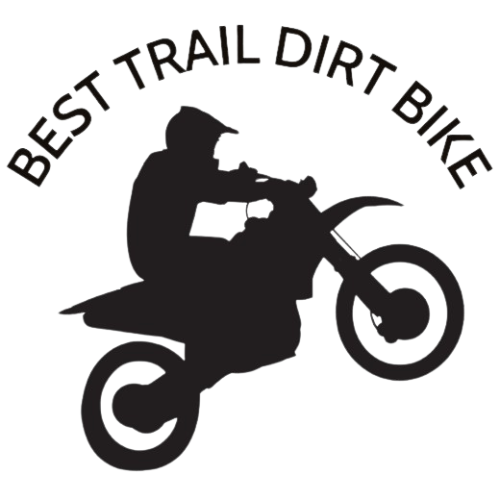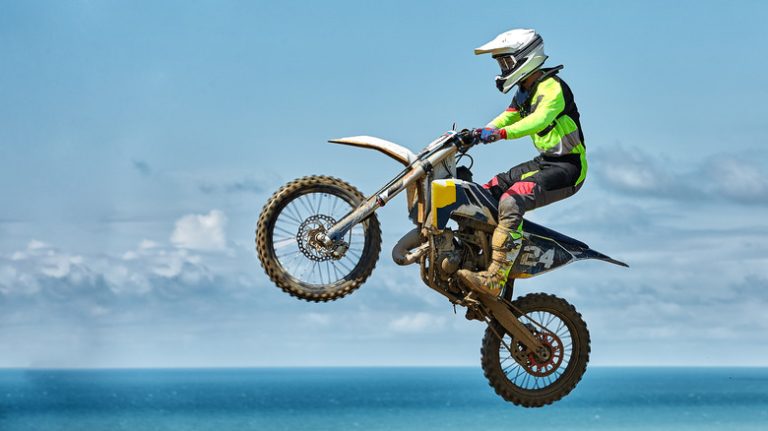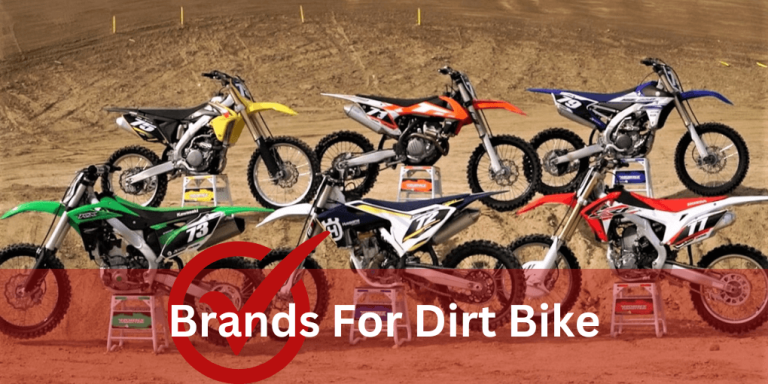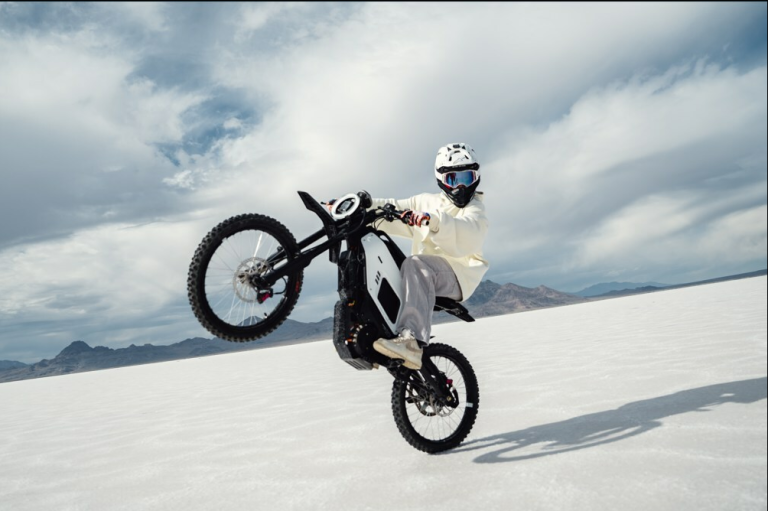How to Choose the Best Tires for Your Dirt Bike
Choosing the best tires for your dirt bike, especially if you’re aiming for the best trail dirt bike experience, involves careful consideration of several factors, including your riding style, preferred terrain, and budget constraints. The right set of tires can significantly impact your dirt bike’s performance, safety, and overall riding enjoyment. This comprehensive guide will walk you through the essential aspects of tire selection, from understanding tire terminology to evaluating popular options for different riding styles.
We’ll delve into the intricacies of tire tread patterns, sizes, and construction, highlighting how each element contributes to a tire’s performance on various terrains. We’ll also discuss how your riding style, whether you’re a casual trail rider or an aggressive motocross competitor, influences the type of tire that best suits your needs. Additionally, we’ll address the importance of budget in tire selection and offer insights on how to find the best value for your investment.
To further assist you in your decision-making process, we’ll explore popular tire options tailored for different riding disciplines, including trail riding, motocross, and enduro. We’ll provide a closer look at some top brands and models known for their performance and durability in the off-road world. Finally, we’ll offer guidance on tire maintenance and replacement, ensuring that you get the most out of your chosen tires and maintain optimal performance for your best trail dirt bike adventures.
Understanding Tire Terminology
Tire terminology forms the foundation of informed tire selection. Tread patterns, the most visible aspect of a tire, play a crucial role in determining its performance characteristics. Knobby tires, characterized by large, widely-spaced lugs, excel in loose or muddy conditions. These tires provide superior traction by allowing the lugs to dig into soft surfaces. Conversely, block-pattern tires feature smaller, more closely-spaced lugs, offering better stability on harder surfaces.
Tread depth and spacing significantly impact a tire’s traction and durability. Deep treads with wide spacing between lugs provide excellent mud-shedding capabilities but may wear faster on hard surfaces. Shallower treads with closer spacing offer improved stability and longevity on firmer terrain but may struggle in muddy conditions.
Tire size represents another critical factor in tire selection. The correct tire size ensures optimal performance and compatibility with your dirt bike model. Tire size affects various aspects of riding, including handling, stability, and speed. Larger tires generally provide better traction and shock absorption but may increase rolling resistance. Smaller tires offer quicker acceleration and improved maneuverability but may sacrifice some stability.
Tire construction techniques influence a tire’s performance characteristics. Bias-ply tires, constructed with crisscrossing layers of ply cord, offer excellent puncture resistance and durability. These tires excel in rugged off-road conditions. Radial tires, featuring ply cords that run perpendicular to the direction of travel, provide superior stability and heat dissipation. Radial tires often deliver a smoother ride and better tread life but may be more susceptible to sidewall damage in extreme off-road conditions.
Factors to Consider When Choosing Tires

Riding style significantly influences tire selection. Motocross riders require tires that provide aggressive traction for high-speed cornering and jumping. Trail riders benefit from tires that offer a balance of traction and durability for varied terrain. Enduro riders need tires capable of handling long distances and diverse surfaces.
Terrain preferences play a crucial role in determining the best tires for your dirt bike. Sandy environments demand tires with widely-spaced knobs to provide maximum traction and prevent sinking. Muddy conditions require tires with self-cleaning tread patterns to maintain grip. Rocky terrain calls for tires with reinforced sidewalls to resist punctures and cuts.
Budget considerations inevitably factor into tire selection. High-performance tires often come with a premium price tag, while budget-friendly options may sacrifice some performance or durability. Balancing your budget with your performance requirements is essential when choosing the best tires for your dirt bike.
Brand reputation should not be overlooked when selecting tires. Established brands like Dunlop, Michelin, and Pirelli have earned their reputations through years of research, development, and real-world testing. These brands often offer a wide range of tires to suit various riding styles and conditions.
Popular Tire Options for Different Riding Styles

Motocross tires exemplify the pinnacle of off-road performance. These tires feature aggressive knobby tread patterns designed to provide maximum traction on loose surfaces. The Dunlop Geomax MX33, for example, boasts a unique tread pattern that enhances cornering stability and acceleration. Motocross tires prioritize performance over longevity, making them ideal for competitive racing but less suitable for extended trail riding.
Trail riding tires strike a balance between traction and durability. These tires often feature a combination of knobby and block tread patterns to handle a variety of terrains. The Michelin Starcross 5 Medium offers excellent all-around performance for trail riders, providing good traction in loose conditions while maintaining stability on harder surfaces.
Enduro tires cater to riders who tackle long distances and diverse terrains. These tires combine the aggressive traction of motocross tires with the durability needed for extended rides. The Pirelli MT43 Pro Trial, for instance, features a unique tread pattern that provides excellent grip on both soft and hard surfaces, making it a versatile choice for enduro riders.
Adventure tires represent a niche category for dirt bike riders who frequently transition between off-road and on-road riding. These tires typically feature a more street-oriented tread pattern while retaining some off-road capabilities. The Continental TKC 80 exemplifies this category, offering a 50/50 on-road/off-road design that performs well on various surfaces.
Here’s a comparison table of popular tire options for different riding styles:
| Tire Model | Riding Style | Key Features | Price Range |
|---|---|---|---|
| Dunlop Geomax MX33 | Motocross | Aggressive knobby tread, excellent cornering | $$$$ |
| Michelin Starcross 5 Medium | Trail | Balanced tread pattern, versatile performance | $$$ |
| Pirelli MT43 Pro Trial | Enduro | Unique tread design, excellent grip on various surfaces | $$$ |
| Continental TKC 80 | Adventure | 50/50 on-road/off-road design, versatile performance | $$ |
Tire Maintenance and Replacement

Proper tire maintenance is crucial for optimal performance and safety. Tire pressure plays a significant role in how your dirt bike handles various terrains. Lower tire pressures increase the tire’s contact patch, providing better traction in soft conditions. Higher pressures reduce rolling resistance and improve stability on harder surfaces. Regularly checking and adjusting tire pressure based on terrain and riding style is essential for maximizing performance and tire life.
Recognizing signs of tire wear is crucial for maintaining safety and performance. Key indicators of tire wear include:
1. Reduced tread depth
2. Uneven wear patterns
3. Cracking or dry rot
4. Punctures or cuts in the tread or sidewall
5. Flat spots or bald areas
When these signs become apparent, it’s time to consider replacing your tires. Riding on worn tires compromises safety and performance, potentially leading to accidents or mechanical issues.
Conclusion
Choosing the best tires for your dirt bike involves carefully considering various factors, including your riding style, terrain preferences, and budget. Understanding tire terminology, such as tread patterns, sizes, and construction techniques, provides a solid foundation for making informed decisions. Evaluating popular tire options for different riding styles allows you to narrow down choices that align with your specific needs.
Remember that the best tires for your dirt bike are those that complement your riding style, suit your preferred terrain, and fit within your budget. By taking into account all these factors and maintaining your tires properly, you can significantly enhance your dirt bike’s performance, safety, and overall riding experience. Whether you’re a motocross racer, trail enthusiast, or enduro adventurer, selecting the right tires will undoubtedly contribute to more enjoyable and successful rides.

Jason Wilkins began his career with a passion for online shopping experiences and deep insights into the outdoor gear market. With the aim of providing excellent choices for those who love an active lifestyle, he established besttraildirtbike.com, specializing in advising and selling Amazon Affiliate products suitable for dirt bikes, accessories, and touring gear.
Leveraging his expertise in SEO techniques and business management skills, Jason has built a reputable brand, attracting thousands of customers. As a dedicated and creative leader, he continuously seeks ways to enhance the user experience and sustainably grow the business.
Jason has in-depth knowledge of dirt bike trends and accessory innovations, constantly updating himself on the latest breakthroughs in this field. On his website, he shares detailed and objective reviews of hot products on the market, along with tips for safe dirt biking and touring.
With the motto “Passion Without Limits,” Jason aspires to inspire many outdoor enthusiasts to explore the wonders of nature. Under his guidance, besttraildirtbike.com is steadily becoming a trusted destination for customers to find quality products for their dirt biking and adventure touring pursuits.






Great guide on choosing dirt bike tires! It’s really helpful for newbies like me to understand the differences between tire types and tread patterns. I’d love to hear more about how to balance performance and longevity when choosing a tire. Any tips for getting the most out of your tires while still having a blast on the trails?
Thank you for your feedback, Stella! We’re glad you found the guide helpful. Balancing performance and longevity in dirt bike tires is indeed a common concern. Here are some tips to help you get the most out of your tires while still enjoying your rides:
Choose intermediate compound tires: These offer a good balance between grip and durability.
Rotate your tires regularly: This helps ensure even wear and extends their lifespan.
Maintain proper tire pressure: This improves performance and reduces premature wear.
Consider your riding style and terrain: Match your tires to where you ride most often for optimal performance and longevity.
Invest in quality tires: Higher-quality tires often last longer and perform better.
Clean your tires after rides: This helps prevent damage from stuck debris.
Use tire sealant: This can prevent small punctures and extend tire life.
Remember, while longevity is important, don’t compromise too much on performance, especially regarding safety features like traction. It’s often worth replacing tires a bit more frequently to ensure you’re always riding with optimal grip and control. Enjoy your rides!
This article is a fantastic resource for dirt bike enthusiasts looking to choose the right tires. I appreciate the detailed breakdown of tire types for different terrains and riding styles. The explanation of tire construction and tread patterns is particularly informative. It’s great that the article covers important factors like durability, grip, and price. The tips on maintenance and when to replace tires are also valuable. Overall, this guide provides comprehensive information to help riders make informed decisions about their dirt bike tires and optimize their riding experience.
Thank you for your kind words, Mila!
I’m glad you found the article helpful and informative. We strive to provide detailed and practical information to help dirt bike enthusiasts make the best choices for their riding needs. If you have any more questions or need further advice on dirt bike tires, feel free to ask.
Happy riding!
Great article on selecting the right tires for dirt biking! The detailed explanation of various tire features and their effects on performance is very informative. One thing I’m curious about is how to determine the right tire pressure for different types of terrain. Additionally, how do you assess the longevity of a tire to ensure it’s worth the investment?
Hi Olivia,
Thank you for your kind words about the article! When it comes to determining the right tire pressure for different types of terrain, it’s crucial to adjust based on the conditions you’ll be riding in. For hard-packed surfaces, slightly higher pressure (around 12-15 psi) can help prevent punctures and improve handling. In contrast, for soft or loose terrain like sand or mud, lower pressure (8-12 psi) can provide better traction and a smoother ride by allowing the tire to conform to the surface.
To assess the longevity of a tire, consider these factors: tread depth, the type of terrain you’ve been riding on, and the frequency of usage. Tires with deeper treads generally last longer, but aggressive riding or harsh terrains can wear them out faster. Regularly inspect for signs of uneven wear, cracks, or bald spots. If you’re seeing these signs, it might be time to consider a replacement. Investing in a high-quality tire that suits your riding style and terrain can help ensure it lasts longer.
Thank.
I found this article to be very insightful for choosing dirt bike tires. The tips on selecting the right tread pattern based on riding conditions were particularly useful. I’m interested in knowing how tire width affects handling and stability. Additionally, do you have recommendations for tires that perform well in both wet and dry conditions?
Thank you for your positive feedback, Jamie! I’m glad you found the article helpful.
Regarding your question about tire width, wider tires generally provide more surface area contact with the ground, which can improve stability and traction, especially in loose or soft terrain. However, they can also increase rolling resistance, which might slightly reduce speed and maneuverability. Narrower tires, on the other hand, tend to offer quicker handling and are often preferred in situations requiring precise control.
For tires that perform well in both wet and dry conditions, you might consider the Michelin Starcross 5 Medium or the Pirelli MT43 Pro Trial. Both are versatile options that provide good traction across various surfaces, making them reliable choices regardless of the weather.
Excellent guide on dirt bike tires! The detailed discussion on different tire materials and their advantages is very informative. Could you provide more information on how to balance tire durability with performance? Also, are there any tire maintenance tips that can help extend their lifespan?
Thank you, Lucas! I’m glad you found the guide helpful. Balancing tire durability with performance involves a few key considerations:
Tire Compound: Softer compounds offer better grip but tend to wear out faster. Harder compounds last longer but might compromise traction. Choosing a medium compound tire can provide a good balance between grip and longevity.
Riding Conditions: Adjust tire pressure according to the terrain. Lower pressures for soft terrain improve grip and longevity, while higher pressures on hard terrain reduce wear.
Maintenance Tips:
Regularly check and maintain the correct tire pressure.
Inspect for signs of wear, such as reduced tread depth or cracks.
Rotate tires if your dirt bike setup allows, to ensure even wear.
Proper care will extend the lifespan of your tires while maintaining performance.